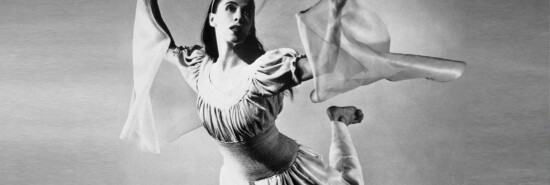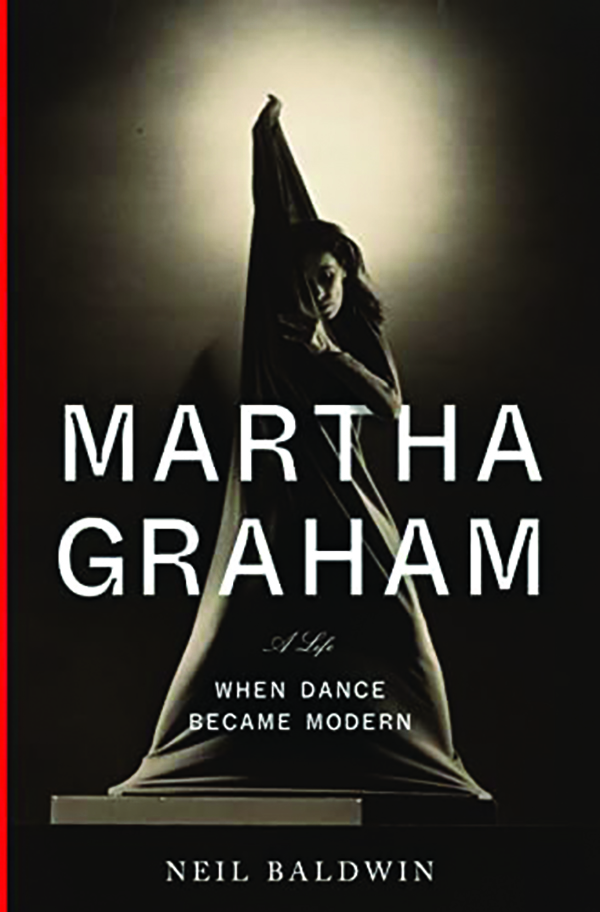
The perils of writing about dancing
Peter Tonguette
I do not envy those tasked with evoking the kinetic, effervescent, impermanent art of dance using the stolid, literal written word. For nearly a decade, I reviewed dance performances for the Columbus Dispatch, the metro daily newspaper in Columbus, Ohio. What I saw was often exciting — the hushed solemnity of George Balanchine’s Serenade, the New York vim and vigor of Jerome Robbins’s Fancy Free, the disorderly mischief of the drag troupe Les Ballets Trockadero de Monte Carlo.
But, just as often as it was exciting, it was challenging to verbalize. One could discuss superlative technique or call out glaring flubs. But to capture the alchemy of movement, music, and silent communion between dancer and spectator integral to a great dance proved elusive. The essence of an evening of dance, that art that expresses itself tactilely and that one takes in visually, is often lost to words. The best writers on dance — say, Arlene Croce or Toni Bentley — achieve the impossible ideal. As Oscar Hammerstein II might have put it, to write on dance is to try to hold a moonbeam in your hands.

Thus it was with a profound sense of professional empathy that I read Neil Baldwin’s new biography of Martha Graham, the revolutionary choreographer-dancer who was born in what was then Allegheny, Pennsylvania, in 1894, and who, by the time of her death at age 96 in 1991, had thoroughly convulsed modern dance in America with her striking sense of movement. In the book’s opening pages, Baldwin efficiently summarizes her style, expressed over 180 dances, as “contraction and release, a fluid, living organism that evolved and expanded in relation to her own body knowledge and the body types and personalities of the hundreds of dancers she taught.”
When I was reviewing dance, I had (on average) a mere 12 to 14 column inches to fill. Baldwin, on the other hand, fills more than 500 pages. There can be no question that Baldwin knows his subject well, but his descriptive powers fail him when he attempts to recreate, often moment by moment, various Graham dances on the page. Here he is on Graham’s 1929 dance Heretic: “She steps forth and skims across the lined-up group, oblivious; then, in the suspended silence before the next percussive measures, swerves around their backs. The women part ranks, stalking and lunging into alliances of four and six, seeming to permit her incursion.” Well, you can sort of picture it all, but, really, the only thing that stalks and lunges here is Baldwin’s prose.
To be sure, Heretic is a relatively obscure work by the legendary Graham, and perhaps Baldwin felt the need to explain the work’s contours in detail for the general reader. But Baldwin manages to make monotony out of even Graham’s most widely seen work, the 1944 masterpiece Appalachian Spring, which, to the music of Aaron Copland, makes high and inspiring drama out of a Bride and her Husbandman sorting out their lives amid the wilderness of an earlier America, sparsely indicated, in Isamu Noguchi’s stunning set decoration, a lone rocking chair and a few intersecting beams indicating a homestead.
Anyone can watch a classic 1958 performance of Appalachian Spring, danced by Graham herself, on YouTube, and I ask those who have whether the work’s extraordinary power — the way its sharp, severe choreography and barren sets combine with Copland’s lilting Shaker-influenced score to impart gravity to the lives of plain people — is at all evoked in overstuffed passages such as these: “The Revivalist’s flock inspires the Husbandman to burst from reverie, demonstrating to his reclusive lady — with slides into near-splits, kicks that arrow upward, hands on hips, arms akimbo, and knees practically touching his chin — that he is ‘rarin’ to go.’” I may not have been a great dance critic, but I hereby nominate the permanent banishment of the phrase “arms akimbo” from dance criticism.
Baldwin, the author of previous biographies of Man Ray and William Carlos Williams, is on surer ground when explicating Graham’s intentions as an artist. There are good passages on Kandinsky, as well as such unlikelier sources as Nietzsche and Schopenhauer. He admirably roots her in a Midwestern family. We can discern the future dance task-master in Baldwin’s account of Graham’s father George Greenfield Graham’s expectations for the oldest of his four offspring. “He insisted that, as his eldest, the young lady must be the diligent figurehead for her younger siblings, representing what was best about the close-knit Presbyterian family,” Baldwin writes. “She had to be impeccably attired and groomed at all times, especially on Sundays for churchgoing — white gloves, white skirt neatly pleated, hair pulled back and tied with a ribbon.”
At church, Martha ignored the Book of Order but was moved to movement by the hymns — a harbinger of things to come. Even when the family pulled up stakes and moved to sunny southern California, the girl remained disciplined and serious as only a future choreographer could be. She judged a school debate over whether “the direct vote of the people” should elect the president, and we can see the outlines of her hankerings for rural life, expressed in Appalachian Spring, in her arguing on behalf of a school resolution stating that “under present conditions, country life is preferable to life in the city.” Naturally, there is a transformative moment when young Martha settles on her path: In 1911, Graham was accompanied by her father to a performance of modern dance maven Ruth St. Denis. As Graham later put it, “my fate was sealed.”
Baldwin is even better when situating Graham in a constellation of early twentieth-century artists and thinkers who sloughed off the influence of Europe and instead sought inspiration from America — among them Gertrude Stein, Waldo Frank, and Frank Lloyd Wright, whose “no-frills plain-spoken work ethic” is compared with Graham’s. Helpfully, Baldwin contrasts Graham with another one-woman dancing wonder, Isadora Duncan: “A California girl by birth, Duncan achieved renown in the capitals of Europe; Graham traversed the length and breadth of her own land to articulate a new dance language, staking out native terrain.”
Indeed, Graham exhorted “know the land” — by which she meant her land, our land — in a famous essay: “Its exciting strange contrasts of barrenness and futility — its great sweep of distances — its monstrous architecture — and the divine machinery of its invention.” Graham was trying to develop a new type of dance, but that something new had to spring from the bosom of her homeland. That is, the American continent and its history, good and ill, was her subject in such works as Appalachian Spring, Chronicle, and American Document. None are examples of rah-rah nationalism, but all make use of American iconography in creative, aspirational ways. The set of Frontier included a “simple, rustic section” of a split-rail fence, and American Document ends with the recitation of lines from the Gettysburg Address. And then there’s Appalachian Spring, which is more poetic and less preachy and which stirs whatever remnant of the pioneer spirit resides within each of us. This key insight, though, is thoroughly obscured in a biography that is too often left in a bog not only of Baldwin’s strained writing on Graham’s dances themselves but also of the sometimes impenetrable dance world Graham inhabited. For long stretches, the book reads as a crazy quilt portrait of Graham’s teachers, colleagues, and collaborators. Yes, Graham may have made dance modern. But here in a history book, with such voluminous detail, Baldwin makes it boring. When Baldwin writes at the end that Graham, in her last several decades, produced some brilliant and diverse work that is “beyond the boundaries of this book,” which stops with 40 years of its subject’s life left to go, it’s only natural to ask why, exactly, is it beyond the boundaries?
What can I say? Great dance looks effortless. Writing about dance is as tough as just-OK dance looks.
Peter Tonguette is a contributing writer to the Washington Examiner magazine.
